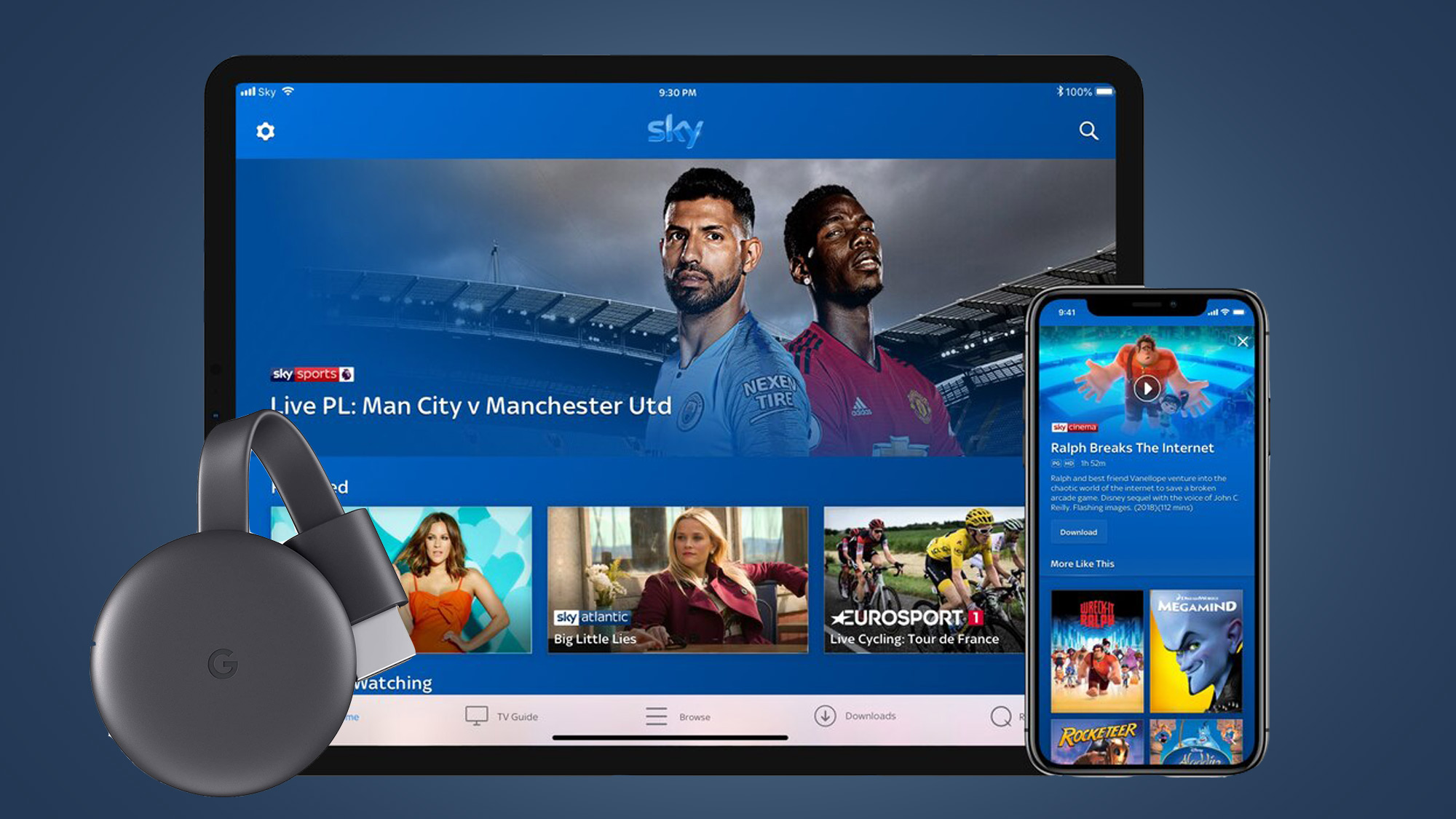Introduction
When it comes to streaming music, there are many options available, but one of the most popular choices is the Amazon Music app. However, despite its widespread usage, many users have experienced frustration and disappointment with the app’s performance and functionality. In this article, we will explore the reasons why the Amazon Music app has earned a reputation for being subpar and discuss the various issues that users encounter on a regular basis.
While Amazon Music offers a vast library of songs and a convenient platform for streaming music, it falls short in several critical areas. Users frequently report difficulties in navigating the app, encountering glitches and crashes, and experiencing inconsistent audio quality. Additionally, the app’s limited music discovery features and the challenges associated with creating and managing playlists has left many users feeling unsatisfied.
Furthermore, the lack of customization options and the app’s limited compatibility with other platforms have also contributed to the overall dissatisfaction with the Amazon Music app. Lastly, the poor customer support provided by Amazon has left users feeling neglected and frustrated.
By examining these issues in detail, it is our hope that this article will shed light on the shortcomings of the Amazon Music app and provide users with a better understanding of the challenges they may encounter. It is important to note that this article is not intended to discourage individuals from using the app, but rather to inform users about its limitations and help them make more informed decisions about their music streaming options.
Now, let’s delve into the reasons why the Amazon Music app has been widely criticized and explore the specific areas that leave users wanting more.
Lack of User-Friendly Interface
One of the primary complaints among users of the Amazon Music app is its lack of a user-friendly interface. From the moment users open the app, they are greeted with a cluttered and confusing layout that makes it difficult to navigate and find the desired music.
The organization of the app’s menus and features is counterintuitive, with important options buried deep within sub-menus or hidden behind ambiguous icons. This lack of clarity and intuitive design makes it challenging for users, especially those who are new to the app, to find and access the music they want to listen to. Instead of seamlessly guiding users through the app, the interface adds unnecessary frustration and confusion to the overall user experience.
Another aspect that contributes to the lack of user-friendliness is the absence of clear and concise labeling. Important features and functions are often poorly labeled or not labeled at all, leaving users guessing about their purpose and functionality. This lack of clarity adds unnecessary time and effort to basic tasks such as creating playlists, finding artist information, or adjusting audio settings.
Add to that the excessive amount of advertisements and promotional content that clutter the interface, and users are left feeling overwhelmed and discouraged. While advertising is a means of generating revenue, the excessive presence of ads detracts from the overall user experience and makes it difficult to focus on enjoying the music.
The Amazon Music app also lacks basic customization options that would allow users to personalize the interface to their liking. For example, users are unable to change the app’s color scheme, font size, or layout, leaving them stuck with a default interface that may not suit their preferences or needs.
Overall, the lack of a user-friendly interface in the Amazon Music app diminishes the overall enjoyment and usability for users. It hinders their ability to easily find and access their favorite music, adds unnecessary confusion and frustration to basic tasks, and limits their ability to customize the app to their liking.
Limited Music Library
Another major drawback of the Amazon Music app is its limited music library. While the app boasts a fairly extensive collection of songs, it falls short when compared to other popular streaming services.
Users often find that their favorite artists, albums, or songs are not available on Amazon Music. This can be particularly frustrating for music enthusiasts who enjoy exploring diverse genres or discovering new artists. The lack of content diversity and variety hinders the app’s ability to cater to a wide range of musical tastes and preferences.
In addition to the limited selection, users also encounter difficulties in finding specific versions or alternate recordings of songs. This is especially problematic for fans of live performances or rare tracks. The app’s limited offerings deprive users of the opportunity to fully explore and enjoy the vast world of music.
Furthermore, Amazon Music’s library is notably lacking in featured exclusive releases or early access to new music. Many users turn to streaming services to be at the forefront of music trends and enjoy exclusive content. However, the Amazon Music app fails to deliver in this area, making it less attractive to users who value access to the latest releases.
While Amazon does offer an extensive collection of music, it is evident that the library is not as comprehensive or diverse as that of its competitors. As a result, users may find themselves seeking alternative streaming platforms that offer a wider range of content and a more expansive music library.
Frequent Glitches and Crashes
One of the most frustrating issues reported by users of the Amazon Music app is the frequent occurrence of glitches and crashes. These technical problems disrupt the seamless music streaming experience and often lead to user dissatisfaction.
Users commonly experience freezes, lagging, or sudden app shutdowns while using Amazon Music. These disruptions can occur during playback, while searching for music, or when navigating through the app’s menus and features. Such interruptions not only interrupt the user’s listening experience but also disrupt the flow and enjoyment of their chosen music.
Another common glitch experienced by users is the app’s failure to properly sync with their music libraries. Many users report missing or duplicated songs in their playlists or libraries, which can be a significant inconvenience and time-consuming to correct manually.
In addition to glitches, the Amazon Music app is also prone to crashes, particularly when used on lower-end or older devices. This issue can be especially frustrating for users who rely on their mobile devices to access and enjoy their music. Constant app crashes not only disrupt the listening experience but can also result in data loss or corruption.
The repeated occurrence of these glitches and crashes indicates a lack of reliable and stable software development and quality control by Amazon. By failing to address these technical issues promptly, the company leaves users feeling frustrated and dissatisfied with their overall music streaming experience.
Unfortunately, it appears that these issues persist across multiple devices and operating systems, suggesting that the problem lies within the app itself rather than external factors. As a result, users may find themselves searching for alternative music streaming services that provide a more stable and glitch-free experience.
Inconsistent Audio Quality
One of the significant criticisms leveled against the Amazon Music app is its inconsistent audio quality. Users have reported experiencing variations in sound quality across different songs, albums, and genres, which can significantly impact their listening experience.
Users have complained about the presence of audio artifacts, such as crackles or pops, which disrupt the clarity and smoothness of the music. These distortions are particularly noticeable when using high-quality audio equipment or listening to music with intricate instrumentals or delicate nuances.
Moreover, some users have noted a noticeable difference in audio quality between streaming and downloading music through the app. Although Amazon Music offers the option to download songs for offline listening, users have reported a drop in audio fidelity when compared to streaming. This inconsistency in quality can be frustrating for users who expect a consistent level of audio performance regardless of their listening mode.
Another issue that affects the audio quality is the dependence on sound compression algorithms. To reduce file sizes and enable faster streaming, Amazon Music employs compression techniques that compromise the quality of the audio. This compression can result in a loss of dynamic range, muffled sound, or the flattening of sonic details, ultimately detracting from the overall listening experience.
Furthermore, users have noted that the app does not consistently stream music at the highest available bitrates, even when using a reliable internet connection. This can result in a lower level of audio fidelity and a diminished listening experience compared to other streaming platforms that prioritize higher bitrates.
Overall, the inconsistent audio quality experienced on the Amazon Music app raises concerns about its commitment to providing a premium listening experience. It is important for users to have confidence in the app’s ability to deliver high-quality sound consistently, regardless of the device or streaming method being used.
Poor Music Discovery Features
One of the critical aspects of a music streaming app is its ability to help users discover new music and artists. However, the Amazon Music app has been heavily criticized for its poor music discovery features, which significantly hampers users’ ability to explore and find new content.
One major drawback is the lack of personalized recommendations. Unlike other popular streaming platforms, Amazon Music fails to leverage user data and preferences to provide tailored recommendations based on individual listening habits. As a result, users are left to navigate through the vast music library on their own, without the guidance and assistance of personalized suggestions.
In addition to the absence of personalized recommendations, the app also falls short in offering curated playlists or radio stations that cater to specific moods, genres, or themes. These features are fundamental for users looking to discover new music or create a customized listening experience. Without them, users are forced to rely on their own efforts to seek out new artists or rely on external sources for music recommendations.
Furthermore, the app’s search functionality has also been criticized for its limitations and lack of precision. Users have reported difficulties in finding specific songs or artists, even when entering accurate search terms. The search algorithm often fails to deliver relevant results or displays incomplete or inaccurate information, which hinders users’ ability to discover and explore music effectively.
While the app does offer a “New Releases” section, it is often limited to mainstream or popular artists, overlooking up-and-coming musicians or niche genres. This lack of diversity and focus on mainstream content further restricts users’ opportunities for music exploration and discovery.
On top of these issues, the app also lacks social features that allow users to share and discover music through their social networks. Connecting with friends and seeing their music recommendations is an essential aspect of music discovery for many users, but this feature is noticeably absent from the Amazon Music app.
Overall, the poor music discovery features on the Amazon Music app hinder users’ ability to explore and find new music. Without personalized recommendations, curated playlists, accurate search results, and social sharing capabilities, users are left with limited options for discovering new artists and expanding their musical horizons.
Difficulty in Creating and Managing Playlists
Creating and managing playlists is an essential feature for music streaming apps, as it allows users to curate their own personalized music collections. However, the Amazon Music app falls short in providing a user-friendly experience for creating and managing playlists, leaving users frustrated and dissatisfied.
One of the primary issues users encounter is the lack of intuitive playlist creation tools. The process of adding songs to a playlist can be cumbersome and time-consuming, requiring multiple steps and a confusing interface. Users often report difficulties in finding the option to create a new playlist or add songs to an existing one, resulting in a frustrating and inefficient experience.
In addition, the app lacks essential playlist management features that users have come to expect from other streaming platforms. For example, there is no easy way to rearrange the order of songs within a playlist or to sort playlists based on different criteria such as artist, album, or genre. These limitations make it challenging for users to customize and organize their playlists to their liking.
Furthermore, the app’s inability to sync playlists seamlessly across multiple devices is also a significant drawback. Users who switch between different devices, such as smartphones, tablets, or computers, often find that their playlists are not consistently up to date or synchronized. This can result in frustration and the loss of carefully curated playlists.
Another issue users encounter is the lack of collaborative playlist features. Unlike some competing platforms that allow multiple users to contribute to a shared playlist, the Amazon Music app does not provide such functionality. This limitation makes it difficult for users to collaborate with friends or family members in creating and updating playlists for shared enjoyment.
Additionally, users have reported issues with playlist buffering and playback. Songs within a playlist may take longer to load or may experience buffering interruptions, disrupting the seamless listening experience. This can be particularly frustrating when listening to longer playlists or during parties or social gatherings where interruptions can dampen the mood.
Overall, the difficulty in creating and managing playlists on the Amazon Music app detracts from the overall user experience. The lack of intuitive tools, limited playlist management features, syncing issues, and the absence of collaborative playlist options are all factors that hinder users’ ability to enjoy and personalize their music collections as desired.
Lack of Customization Options
When it comes to personalizing the user experience, the Amazon Music app falls short in providing an array of customization options. Users often express frustration with the lack of control they have over the app’s appearance and functionality.
One major area where customization options are lacking is in the visual interface. Unlike some competing platforms that offer various themes, color schemes, or customizable backgrounds, the Amazon Music app has a static and unchangeable design. Users are left with a default look that may not align with their personal preferences or aesthetics.
In addition to visual customization, the app also lacks flexibility in audio settings. Users have limited control over equalizer settings or audio enhancements, such as bass boost or treble adjustment. This limitation hampers users’ ability to fine-tune the audio to their liking and may result in a less satisfying listening experience for those who value audio quality.
Another area where customization options are lacking is in the playback settings. Users have expressed frustration at the inability to set crossfade between songs or adjust the gap between tracks. These features are commonly available in other streaming platforms and allow for a smoother and uninterrupted listening experience.
Furthermore, users desire more control over the app’s recommendations and suggestions. While Amazon Music does provide recently played and recommended playlists, users are not given the option to customize or refine these recommendations based on their individual preferences. This lack of control limits users’ ability to discover new music or tailor their listening experience to their specific tastes.
Additionally, the lack of personalized settings and preferences sync across devices is a significant drawback. Users often find that their customized settings, such as playback order or audio quality preferences, are not synchronized when switching between different devices. This inconsistency adds unnecessary frustration and inconvenience for users who want a consistent experience across their devices.
Overall, the lack of customization options in the Amazon Music app significantly limits users’ ability to personalize and tailor the app to their liking. The absence of visual customization, limited control over audio settings and playback options, and the lack of personalized recommendations all contribute to a less satisfying and immersive user experience.
Limited Cross-Platform Compatibility
One of the key factors that contribute to a positive user experience with a music streaming app is its cross-platform compatibility. However, the Amazon Music app has faced criticism for its limited compatibility across various devices and operating systems.
One of the primary limitations users encounter is the absence of a dedicated desktop application for Amazon Music. While there is a web player available for accessing Amazon Music on a computer, it lacks the full functionality and convenience of a standalone desktop app. This can be frustrating for users who prefer the convenience of a native application and want a seamless experience across different devices.
Furthermore, while the Amazon Music app is available on mobile devices, it is not compatible with all operating systems. Users with devices running older versions of Android or iOS may find themselves unable to download or use the app, limiting their access to their music library and features. This lack of compatibility leaves some users feeling excluded or left behind by the app’s development and updates.
In addition to limited compatibility across devices, the Amazon Music app also lacks integration with popular smart home devices and platforms. Users who rely on voice-controlled assistants such as Amazon Echo, Google Home, or Apple HomePod may find it challenging to seamlessly stream their music through these devices with the Amazon Music app. This limitation can hinder the integration of music streaming into the smart home ecosystem and limit users’ ability to control their music playback hands-free.
Furthermore, the lack of integration with popular third-party music players and services is another area where the app falls short in cross-platform compatibility. Users who rely on other music management or playback software may find it difficult to sync their Amazon Music library or playlists with these external tools, limiting their ability to manage and enjoy their music collection as seamlessly as desired.
Overall, the limited cross-platform compatibility of the Amazon Music app poses challenges for users who want a unified and flexible music streaming experience across different devices and ecosystems. The absence of a dedicated desktop app, limited compatibility with older operating system versions, insufficient integration with smart home devices, and lack of compatibility with other music players all contribute to a less cohesive and seamless user experience.
Poor Customer Support
Another area where the Amazon Music app falls short is in the realm of customer support. Users have voiced their dissatisfaction with the app’s poor customer service and lack of timely and effective assistance.
One of the main issues users encounter is the difficulty in reaching out to a customer support representative. There is a lack of easily accessible and direct channels to connect with support, leaving users feeling frustrated and helpless when they encounter issues or have questions regarding the app’s functionality.
Furthermore, users have reported slow response times from customer support, often waiting for days or even weeks to receive a resolution or answer to their inquiries. The lack of prompt and efficient responses adds to the frustration and inconvenience users experience when they encounter issues that require assistance.
In many cases, users have found that customer support representatives lack the necessary knowledge and expertise to address their concerns adequately. This results in ineffective solutions or generic responses that do not effectively resolve the problems users encounter.
Additionally, the lack of proactive communication from Amazon Music regarding updates, bug fixes, or planned maintenance can leave users feeling left in the dark. Users often report a lack of transparency and communication from the app’s developers, making it difficult to understand if reported issues are being addressed or if improvements are being made to enhance the overall user experience.
Another concern related to poor customer support is the lack of an accessible and comprehensive knowledge base or FAQ section within the app. Users often resort to internet searches or community forums to find answers to their questions, as the app itself lacks a robust self-help resource center. This can be time-consuming and frustrating for users who prefer to find answers or troubleshooting tips within the app itself.
In summary, the poor customer support offered by the Amazon Music app contributes to a negative user experience. The lack of direct and easily accessible support channels, slow response times, limited expertise of customer support representatives, and ineffective communication all contribute to users feeling frustrated and unsupported when issues arise during their use of the app.
Conclusion
The Amazon Music app, while popular among users, has faced criticism for a variety of reasons that hinder the overall user experience. From its lack of user-friendly interface to limited music library, frequent glitches and crashes, inconsistent audio quality, poor music discovery features, difficulty in creating and managing playlists, lack of customization options, limited cross-platform compatibility, and poor customer support, there are various areas where the app falls short in meeting user expectations.
The app’s interface proves to be confusing and cluttered, making it difficult for users to navigate and find their desired music. Furthermore, the limited music library and lack of personalized recommendations limit users’ ability to explore new music and discover new artists. The occurrence of frequent glitches and crashes disrupts the seamless music streaming experience, while the inconsistent audio quality hampers the overall enjoyment of the music. The app’s poor music discovery features make it challenging for users to find new content, and the difficulty in creating and managing playlists adds unnecessary frustration.
Moreover, the limited customization options and lack of cross-platform compatibility leave users without the flexibility to personalize and enjoy their music listening experience across different devices and ecosystems. Lastly, the poor customer support provided by the app falls short in addressing user inquiries and addressing issues promptly and effectively.
While it’s important to note that the Amazon Music app still offers a wide music library and convenient streaming platform, it’s essential for users to be aware of these limitations and consider their individual needs and preferences when choosing a music streaming service. The areas where the app falls short may be significant enough for some users to seek alternative streaming platforms that better meet their expectations in terms of user experience and customer support.
As users continue to demand seamless and immersive music streaming experiences, it is crucial for app developers to address these critical areas of improvement. By focusing on enhancing the user interface, expanding the music library, improving audio quality consistency, providing robust music discovery features, simplifying playlist management, offering more customization options, ensuring cross-platform compatibility, and bolstering customer support, the Amazon Music app has the potential to offer a more satisfying and comprehensive streaming experience for its users.

























